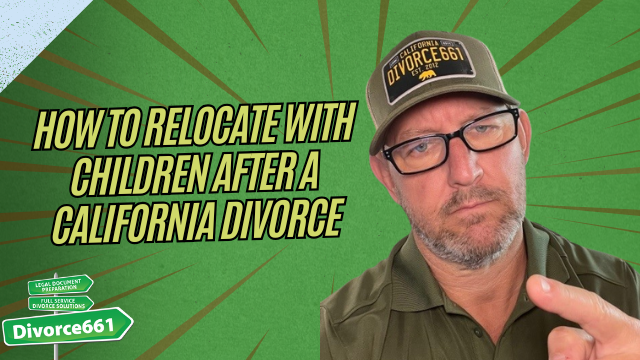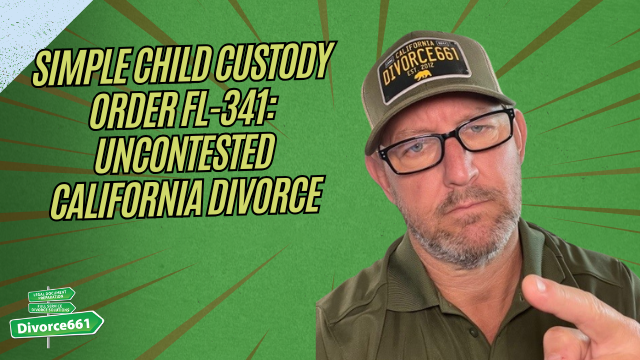How to Determine Child Custody in California
If you are getting divorced and have children, one of your biggest concerns is likely custody: where the kids will live and how important decisions about their lives will be made. Custody in California is focused on the best interest of the child, and understanding the types of custody and how to create a practical parenting plan can make the process less stressful.
Types of Custody: Legal vs Physical
California recognizes two distinct types of custody. It is important to know the difference because each addresses a different aspect of parenting after separation.
Legal Custody
Legal custody refers to the right and responsibility to make major decisions for the child. This includes choices about school, medical and mental healthcare, religious upbringing, and other significant matters affecting the child’s welfare.
Physical Custody
Physical custody concerns where the child lives and the day-to-day care arrangement. Physical custody determines the child’s primary residence and the time each parent spends with the child.
Joint Custody vs Sole Custody
Both legal and physical custody can be shared between parents or awarded to one parent alone. In practice, California courts usually prefer joint custody arrangements when those arrangements are in the child’s best interest. Joint custody encourages both parents to remain actively involved in the child’s life, provided they can cooperate for the child’s sake.
The court prefers joint custody when it is in the child’s best interest.
The Best Interest of the Child Standard
All custody decisions in California are guided by the best interest of the child. Courts evaluate a variety of factors to determine what arrangement will promote the child’s health, safety, stability, and emotional well-being.
Common factors considered include:
- The child’s age and health
- The child’s ties to home, school, and community
- Each parent’s ability to provide stable care
- History of caregiving and the current caretaking arrangement
- Evidence of domestic violence or substance abuse
- The ability of parents to cooperate and communicate about the child
- The child’s preference, depending on age and maturity
How to Create a Parenting Plan That Works
A clear, child-focused parenting plan reduces conflict and makes it easier for courts to approve the arrangement. A good plan covers everyday logistics as well as major decisions.
What to include
- Daily schedule and which parent the child will live with during the week
- Weekend and holiday schedules, including how holidays rotate
- Decision-making authority for education, healthcare, and extracurriculars
- Exchange locations and transportation responsibilities
- Communication methods and expectations between parents
- Procedures for making changes or resolving disputes
- Provisions for travel, school breaks, and emergency situations
Practical steps to drafting a plan
- Talk with the other parent about priorities and what is best for the children.
- Draft a schedule and decision-making outline that emphasizes stability for the children.
- Include specific details for holidays, school breaks, and handoffs to avoid confusion.
- Get the plan in writing and have it reviewed so it can be accepted by the court.
A Real Example
Here is an example of a practical, court-accepted plan that balances stability and shared parenting. The children remained in the family home during the school week, which preserved daily routines and reduced disruption. The parents alternated weekends, giving each parent substantial quality time. Because the plan focused on the children’s needs and was fair to both parents, the court approved it quickly.
Keeping Things Amicable and Out of Court
When parents can work together to create a parenting plan, it minimizes stress for the children and often avoids lengthy court battles. An amicable, well-drafted custody agreement is typically easier for courts to approve because it shows both parents prioritizing the children’s best interests.
How I Can Help
I help amicable couples create child custody agreements that keep things peaceful and out of court. My services include preparing the paperwork, drafting parenting plans that address schedules, holidays, and decision-making, and filing documents so your plan will be accepted by the court.
Services often include flat-fee divorce options, 100 percent remote document preparation and filing, and guidance at every step so you can focus on your children rather than legal stress.
If you need help creating a custody plan that works, schedule a free consultation at Divorce661. Visit https://www.divorce661.com for more information and to book your consultation.
Closing Thought
Child custody is one of the most important aspects of divorce, but with a clear, child-centered parenting plan and cooperative communication, you can create a stable arrangement that serves your children’s best interests. If you want guidance or help preparing documents that the court will accept, reach out and we will guide you every step of the way.










